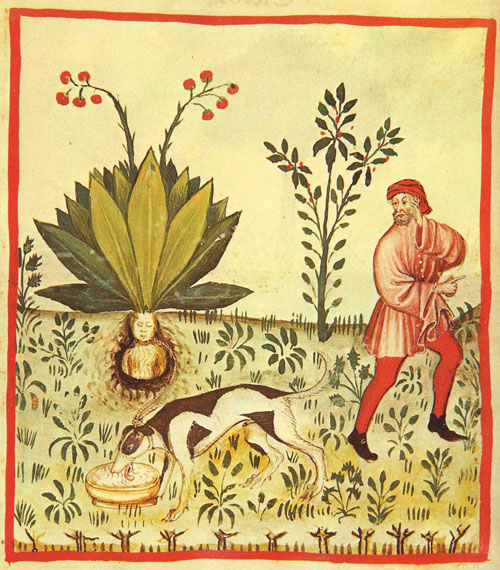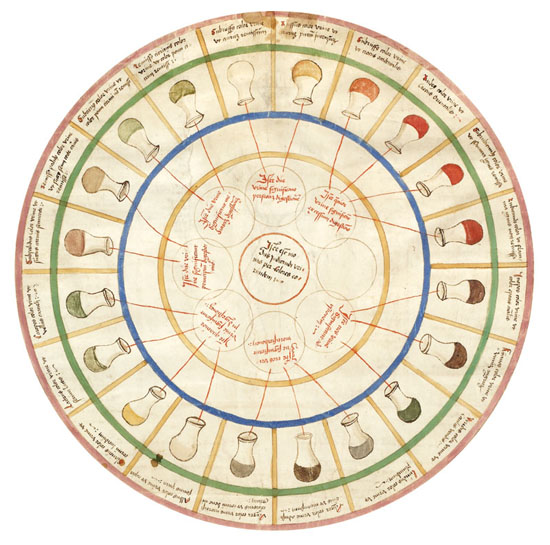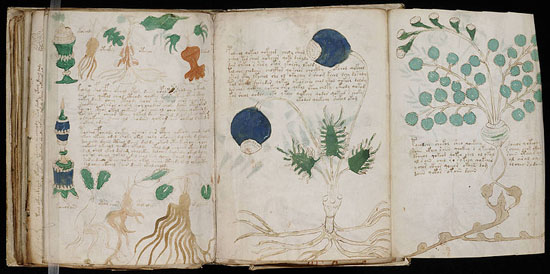Health and Hygiene in Renaissance Italy

During the 13th-15th centuries, health and hygiene books were collected by wealthy Italians. One of the most influential was the Tacuinum Sanitatis, essentially Latin translations from Arabic with illustrations added. Most are self-evident (eating properly, exercise, etc.) but among the activities of daily life is "amore" (up above), right there with preparing food, insomnia and vomiting. Eminently sensible, it's all about keeping life in balance...
The books spread far and wide and many cities published their own Tacuinum. Below is from the Tacuinum of Vienna and it shows the Fruit of the Mandragora (mandrake). The medical advice suggests that "Smelling it helps alleviate headaches and insomnia; spreading it on the skin works against elephantiasis and black infections. Dangers: It stupifies the senses."

The mandrake root has been an irresistable metaphor for writers, including Genesis 30, Shakespeare, Steinbeck, Rushdie and J.K. Rowling, to name a few. One of the more colorful theories has it that mandrakes are seeded by the ejaculation of hanged men. For the more world weary, it is just a magical implausibility...
Go and catch a falling star
Get with child a mandrake root
Tell me where all past years are
Or who cleft the devil's foot
Teach me to hear mermaids singing
Or to keep off envy's stinging
And find
What wind
Serves to advance an honest mind.
- John Donne
Other medical theories of the time are equally fascinating. Take uroscopy or uromancy, whereby doctors would examine the patient's urine - the color, smell and even the taste - to identify particular illnesses like diabetes (if the urine was sweet), jaundice, and so on. In keeping with the times, a wheel was the visual metaphor of choice. This woodcut was by Ulrich Pinder, a town doctor in Nürnberg, in his book Epiphanie Medicorum (1506).

I think this is the right context for discussions of the mysterious Voynich Manuscript, which is similar to the above manuscripts, but its writing is indecipherable and the illustrations are of unknown plants. The obvious explanation is that this is a clever work of fiction, possibly satirical. That hasn't stopped some rather silly speculation that it contains Dan Brown- and Nostradamus-style secret codes. Even to call it a "hoax," as some do, rather misses the point - is fiction a hoax? This is a page from it:

